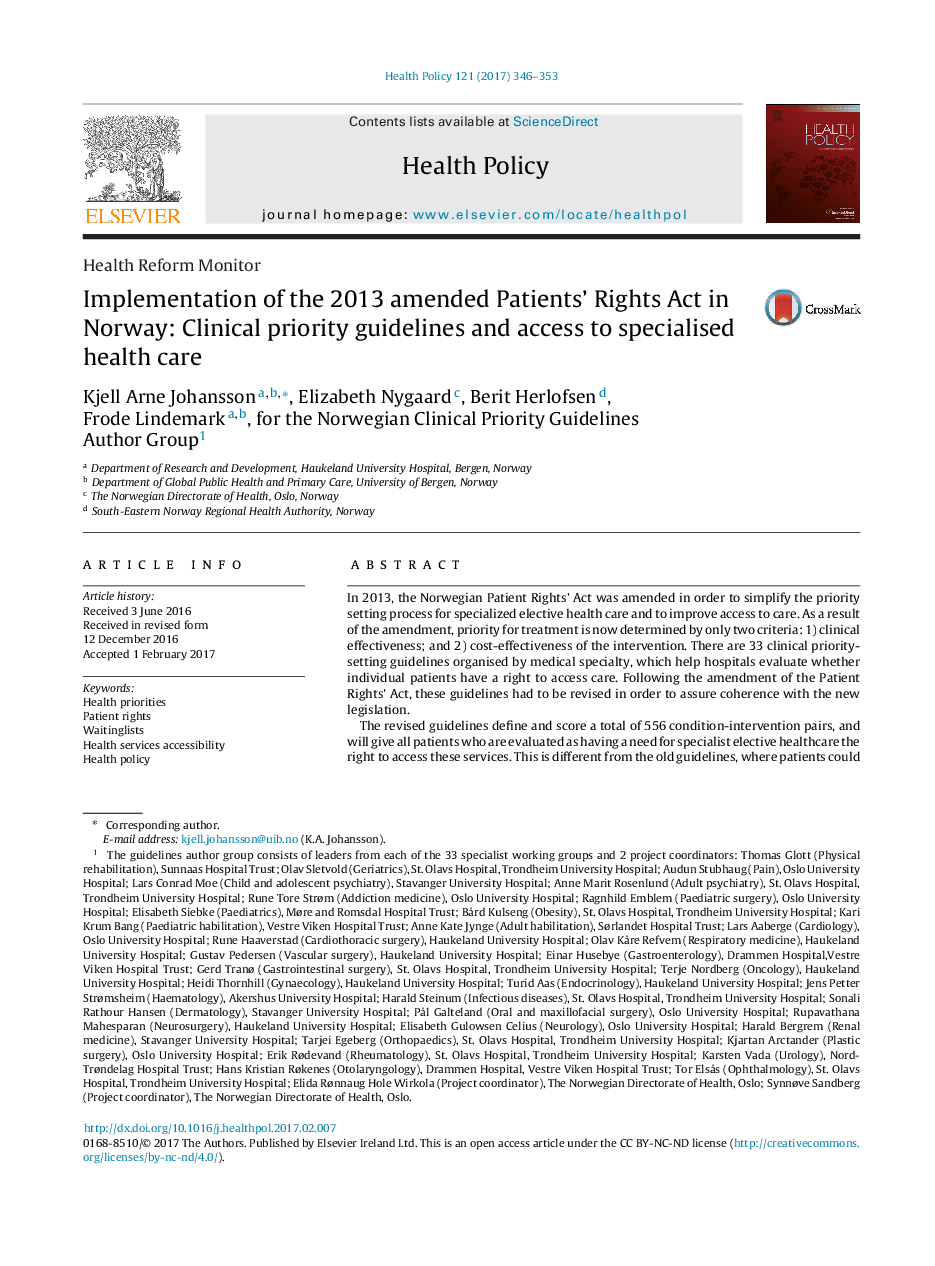| کد مقاله | کد نشریه | سال انتشار | مقاله انگلیسی | نسخه تمام متن |
|---|---|---|---|---|
| 5723354 | 1411445 | 2017 | 8 صفحه PDF | دانلود رایگان |
- The 2013 amendment of the Norwegian Patient Rights' Act required revision of 33 national clinical priority guidelines.
- Rigorous methods for harmonising priorities across specialties were applied in the national revision process (2015).
- The 2013 revision of the Norwegian Patient Rights' Act may prevent inequalities in access to low-priority specialised healthcare.
- The 2013 revision of the Norwegian Patient Rights' Act may displace access to high-priority healthcare for the benefit of low-priority services.
In 2013, the Norwegian Patient Rights' Act was amended in order to simplify the priority setting process for specialized elective health care and to improve access to care. As a result of the amendment, priority for treatment is now determined by only two criteria: 1) clinical effectiveness; and 2) cost-effectiveness of the intervention. There are 33 clinical priority-setting guidelines organised by medical specialty, which help hospitals evaluate whether individual patients have a right to access care. Following the amendment of the Patient Rights' Act, these guidelines had to be revised in order to assure coherence with the new legislation.The revised guidelines define and score a total of 556 condition-intervention pairs, and will give all patients who are evaluated as having a need for specialist elective healthcare the right to access these services. This is different from the old guidelines, where patients could be evaluated as having a need but no right for treatment. According to the new guidelines, a much larger share of patients will be granted a right to necessary specialist healthcare service (93% of condition-intervention pairs versus 77% of condition-intervention pairs in the old guidelines). One reason for this is that the severity of the condition is no longer considered as part of the evaluation process, which means that patients with low levels of severity now have a right to receive treatment. In addition, a new “don't do” list of 40 conditions was created, which may prevent unnecessary treatment.
Journal: Health Policy - Volume 121, Issue 4, April 2017, Pages 346-353
